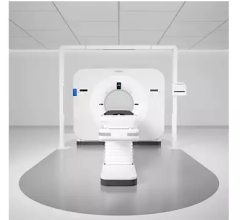July 29, 2008 - Not all parts of a tumor respond to radiation therapy in the same way.
Treatments in the future may target the most resistant tumor regions, but measuring this resistance is far from straightforward, a new analysis shows.
Common radiation therapy prescribes a uniform radiation dose to the entire tumor, even though it is commonly known that some regions resist radiation more than others. Researchers are therefore experimenting with ways to tailor the treatment, with so-called "dose painting," so that more radiation falls on the radio-resistant parts.
For this to be effective, radio-resistance must be well-defined at the molecular level. This presumably can be done with PET scans using the radio-tracer FLT (fluoro-L-thymidine). When injected into the body, FLT is grabbed up by cells in the process of cell division. Therefore, rapidly-dividing cancer cells will look bright in a PET scan. Once treatment is started, those cells that remain bright would be considered radio-resistant (i.e. the radiation is not affecting their activity.) But this simple brightness measure, called a standardized uptake value (SUV), is not the only way to locate non-responsive cells in a PET image. A more precise way (based on a parameter called KFLT) is to model how the radio-tracer travels through the body and is taken up by cells over time.
Urban Simoncic of the Institut Jozef Stefan in Ljubljana, Slovenia, together with collaborators from University of Wisconsin-Madison compared the SUV and KFLT techniques on the exact same sets of PET scans and found that the two selected out different regions as being radio-resistant. This implies that a dose painting treatment based on one model would differ significantly from that based on the other. The researchers believe the community needs to address this discrepancy with more careful clinical investigation.
For more information: www.aapm.org
Source: American Association of Physicists in Medicine


 December 11, 2025
December 11, 2025 









